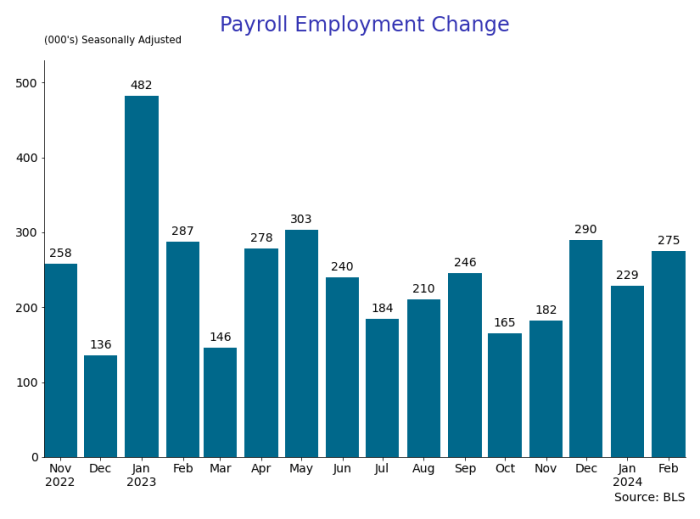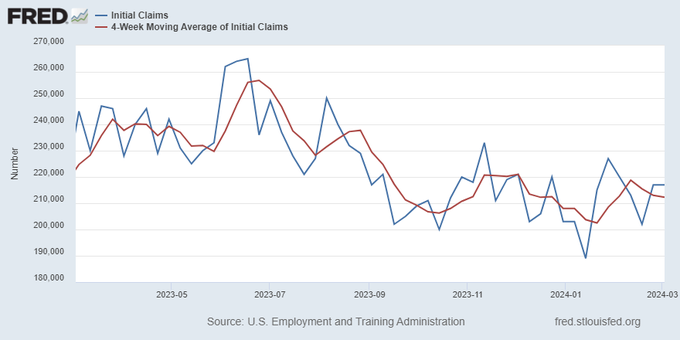Uncategorized
Radiance Holdings Reports Record-Breaking Growth Across its Beauty Sector Brands
Radiance Holdings Reports Record-Breaking Growth Across its Beauty Sector Brands
PR Newswire
DENVER, Nov. 1, 2022
Industry-Leading Brands, Sola Salons and Woodhouse Spa, Achieve Highest Growth Results Since Inception
DENVER, Nov. 1, 2022 /PRNewswir…

Radiance Holdings Reports Record-Breaking Growth Across its Beauty Sector Brands
PR Newswire
DENVER, Nov. 1, 2022
Industry-Leading Brands, Sola Salons and Woodhouse Spa, Achieve Highest Growth Results Since Inception
DENVER, Nov. 1, 2022 /PRNewswire/ -- Radiance Holdings, a global company representing a collection of premier brands in the beauty, wellness, and self-care sectors, announced today the highest growth since the inception of its two rapidly growing brands: Woodhouse Spa, the high-end luxury day spa franchise and Sola Salons, the world's largest and fastest-growing salon studios franchise. Closing out the year with robust expansion and development plans, Radiance Holdings is primed to continue this trajectory into Q1 and Q2 of 2023.
Radiance Holdings expanded Sola Salons internationally to Canada in 2022, with 9 new signings in the last 12 months. The brand has signed 72 franchise agreements nationwide this year alone and will end the year with 655-660 Sola Salons. The advancement has allowed Sola Salons to become the leader in recession-resilient franchises, alongside its innovative salon model that empowers hairdressers, estheticians, nail techs, massage therapists, and other like-minded professionals to take control of their lives and their careers. Also contributing to Sola Salons' corporate success is a 90% occupancy rate average across 625 locations, and an impressive roster of 19,000 independent beauty professionals. Looking ahead, Sola Salons forecasts it will open 60-70 new locations in 2023.
"The rapid expansion we've achieved this year from Sola Salons is a true testament to our brand continuing to exceed consumer demands. The model continues to grow in popularity, and was catapulted amid the pandemic as beauty professionals sought to go independent to offer their clientele more control over their salon experience," said Christina Russell, CEO of Radiance Holdings. "With Sola Salons, our team has implemented strong marketing initiatives for the next three to five years as the brand aggressively targets key markets throughout the U.S. and Canada for franchise development."
Following the acquisition of the Woodhouse Spa by Radiance Holdings in July 2020, the brand has continuously assessed key markets throughout the U.S. for future franchise development. At 75 locations and growing, Woodhouse Spas has opened 10 additional locations across the United States and will end 2022 with five more openings this fall. The rapid expansion has solidified Woodhouse as a premier spa franchise and the unequivocal leader in mood care, pioneering a new category of wellness services in the approachable luxury space. With sales growing 19% year over year, The Woodhouse Spa has signed seven franchise agreements in the first half of 2022, making it the highest growth seen since its inception. Looking towards 2023, Woodhouse Spa will open luxury locations in Raleigh, NC; Savannah, GA; and Odessa, TX, among others.
"This unprecedented growth has only continued to innovate the luxury spa category, giving our customers a resort experience in a neighborhood setting," said Russell. "The brand is powered by our commitment to an unparalleled spa experience that focuses on total well-being and incorporates mood care into every touchpoint of the guest journey. The Woodhouse Spa has proven that its concept resonates with consumers around the U.S. and has driven significant economic growth and job opportunities in the luxury self-care industry."
Radiance Holding's mission to empower franchise owners and beauty professionals with unrivaled opportunities, mentorship, and education continues to propel these brands to new heights. As part of these efforts, Radiance Holdings recently hosted the Woodhouse Spas 2022 Fall Summit for 250 attendees, where franchisee owners and corporate employees from across the country came together to participate in breakout sessions; discuss industry trends, and receive recruiting and retention education; among many other summit seminars. Radiance Holdings will also host the Sola Salons 2022 Fall Summit in October, where hundreds of industry professionals will receive informative content, engage in networking opportunities, and have unrivaled access to vendors and seminar training.
For more information about Radiance Holdings and its portfolio of beauty brands, please visit www.weareradianceholdings.com.
Radiance Holdings represents a collection of premier brands in the beauty, wellness, and self-care sectors. Led by Christina Russell, CEO, Radiance's current brand portfolio includes Sola Salons, the world's largest and fastest-growing salon studios franchise; Woodhouse, the largest premium day spa brand in the U.S.; and BeautyHive, an online distributor of professional beauty products. Radiance is committed to investing in its brands, driving innovation, and helping its franchisees and their community of independent beauty professionals grow their businesses and improve their lives. For more information, please visit www.weareradianceholdings.com.
In 2004, Sola Salons was established with the opening of its first location in Denver, Colorado. Now with more than 630 locations open in the U.S., Canada, and Brazil, Sola is proud to offer 19,000+ independent beauty professionals the freedom and benefits of salon ownership without the risk and overhead of opening a traditional salon. Its innovative salon model empowers hairdressers, estheticians, nail techs, massage therapists, and other like-minded professionals to take control of their lives and their careers. Sola provides beauty professionals with beautiful, fully-equipped salon studios alongside the support and tools they need to launch their salon business in no time. For more information, please visit www.solasalons.com.
Founded in Victoria, Texas in 2001, Woodhouse Spa provides each guest with a tranquil, transformational environment that's both memorable and healthful. From beginning to end, dedicated spa teams ensure that each visit enhances the guest's well-being. With more than 75 spas across the country, guests of Woodhouse Spa are guaranteed the same high-quality signature services and luxurious experiences regardless of location. For more information, please visit www.woodhousespas.com.
View original content to download multimedia:https://www.prnewswire.com/news-releases/radiance-holdings-reports-record-breaking-growth-across-its-beauty-sector-brands-301664331.html
SOURCE Radiance Holdings
Uncategorized
February Employment Situation
By Paul Gomme and Peter Rupert The establishment data from the BLS showed a 275,000 increase in payroll employment for February, outpacing the 230,000…

By Paul Gomme and Peter Rupert
The establishment data from the BLS showed a 275,000 increase in payroll employment for February, outpacing the 230,000 average over the previous 12 months. The payroll data for January and December were revised down by a total of 167,000. The private sector added 223,000 new jobs, the largest gain since May of last year.

Temporary help services employment continues a steep decline after a sharp post-pandemic rise.


Average hours of work increased from 34.2 to 34.3. The increase, along with the 223,000 private employment increase led to a hefty increase in total hours of 5.6% at an annualized rate, also the largest increase since May of last year.

The establishment report, once again, beat “expectations;” the WSJ survey of economists was 198,000. Other than the downward revisions, mentioned above, another bit of negative news was a smallish increase in wage growth, from $34.52 to $34.57.

The household survey shows that the labor force increased 150,000, a drop in employment of 184,000 and an increase in the number of unemployed persons of 334,000. The labor force participation rate held steady at 62.5, the employment to population ratio decreased from 60.2 to 60.1 and the unemployment rate increased from 3.66 to 3.86. Remember that the unemployment rate is the number of unemployed relative to the labor force (the number employed plus the number unemployed). Consequently, the unemployment rate can go up if the number of unemployed rises holding fixed the labor force, or if the labor force shrinks holding the number unemployed unchanged. An increase in the unemployment rate is not necessarily a bad thing: it may reflect a strong labor market drawing “marginally attached” individuals from outside the labor force. Indeed, there was a 96,000 decline in those workers.


Earlier in the week, the BLS announced JOLTS (Job Openings and Labor Turnover Survey) data for January. There isn’t much to report here as the job openings changed little at 8.9 million, the number of hires and total separations were little changed at 5.7 million and 5.3 million, respectively.

As has been the case for the last couple of years, the number of job openings remains higher than the number of unemployed persons.

Also earlier in the week the BLS announced that productivity increased 3.2% in the 4th quarter with output rising 3.5% and hours of work rising 0.3%.

The bottom line is that the labor market continues its surprisingly (to some) strong performance, once again proving stronger than many had expected. This strength makes it difficult to justify any interest rate cuts soon, particularly given the recent inflation spike.
unemployment pandemic unemploymentUncategorized
Mortgage rates fall as labor market normalizes
Jobless claims show an expanding economy. We will only be in a recession once jobless claims exceed 323,000 on a four-week moving average.

Everyone was waiting to see if this week’s jobs report would send mortgage rates higher, which is what happened last month. Instead, the 10-year yield had a muted response after the headline number beat estimates, but we have negative job revisions from previous months. The Federal Reserve’s fear of wage growth spiraling out of control hasn’t materialized for over two years now and the unemployment rate ticked up to 3.9%. For now, we can say the labor market isn’t tight anymore, but it’s also not breaking.
The key labor data line in this expansion is the weekly jobless claims report. Jobless claims show an expanding economy that has not lost jobs yet. We will only be in a recession once jobless claims exceed 323,000 on a four-week moving average.
From the Fed: In the week ended March 2, initial claims for unemployment insurance benefits were flat, at 217,000. The four-week moving average declined slightly by 750, to 212,250
Below is an explanation of how we got here with the labor market, which all started during COVID-19.
1. I wrote the COVID-19 recovery model on April 7, 2020, and retired it on Dec. 9, 2020. By that time, the upfront recovery phase was done, and I needed to model out when we would get the jobs lost back.
2. Early in the labor market recovery, when we saw weaker job reports, I doubled and tripled down on my assertion that job openings would get to 10 million in this recovery. Job openings rose as high as to 12 million and are currently over 9 million. Even with the massive miss on a job report in May 2021, I didn’t waver.
Currently, the jobs openings, quit percentage and hires data are below pre-COVID-19 levels, which means the labor market isn’t as tight as it once was, and this is why the employment cost index has been slowing data to move along the quits percentage.

3. I wrote that we should get back all the jobs lost to COVID-19 by September of 2022. At the time this would be a speedy labor market recovery, and it happened on schedule, too
Total employment data
4. This is the key one for right now: If COVID-19 hadn’t happened, we would have between 157 million and 159 million jobs today, which would have been in line with the job growth rate in February 2020. Today, we are at 157,808,000. This is important because job growth should be cooling down now. We are more in line with where the labor market should be when averaging 140K-165K monthly. So for now, the fact that we aren’t trending between 140K-165K means we still have a bit more recovery kick left before we get down to those levels.

From BLS: Total nonfarm payroll employment rose by 275,000 in February, and the unemployment rate increased to 3.9 percent, the U.S. Bureau of Labor Statistics reported today. Job gains occurred in health care, in government, in food services and drinking places, in social assistance, and in transportation and warehousing.
Here are the jobs that were created and lost in the previous month:

In this jobs report, the unemployment rate for education levels looks like this:
- Less than a high school diploma: 6.1%
- High school graduate and no college: 4.2%
- Some college or associate degree: 3.1%
- Bachelor’s degree or higher: 2.2%

Today’s report has continued the trend of the labor data beating my expectations, only because I am looking for the jobs data to slow down to a level of 140K-165K, which hasn’t happened yet. I wouldn’t categorize the labor market as being tight anymore because of the quits ratio and the hires data in the job openings report. This also shows itself in the employment cost index as well. These are key data lines for the Fed and the reason we are going to see three rate cuts this year.
recession unemployment covid-19 fed federal reserve mortgage rates recession recovery unemploymentUncategorized
Inside The Most Ridiculous Jobs Report In History: Record 1.2 Million Immigrant Jobs Added In One Month
Inside The Most Ridiculous Jobs Report In History: Record 1.2 Million Immigrant Jobs Added In One Month
Last month we though that the January…

Last month we though that the January jobs report was the "most ridiculous in recent history" but, boy, were we wrong because this morning the Biden department of goalseeked propaganda (aka BLS) published the February jobs report, and holy crap was that something else. Even Goebbels would blush.
What happened? Let's take a closer look.
On the surface, it was (almost) another blockbuster jobs report, certainly one which nobody expected, or rather just one bank out of 76 expected. Starting at the top, the BLS reported that in February the US unexpectedly added 275K jobs, with just one research analyst (from Dai-Ichi Research) expecting a higher number.
Some context: after last month's record 4-sigma beat, today's print was "only" 3 sigma higher than estimates. Needless to say, two multiple sigma beats in a row used to only happen in the USSR... and now in the US, apparently.
Before we go any further, a quick note on what last month we said was "the most ridiculous jobs report in recent history": it appears the BLS read our comments and decided to stop beclowing itself. It did that by slashing last month's ridiculous print by over a third, and revising what was originally reported as a massive 353K beat to just 229K, a 124K revision, which was the biggest one-month negative revision in two years!
Of course, that does not mean that this month's jobs print won't be revised lower: it will be, and not just that month but every other month until the November election because that's the only tool left in the Biden admin's box: pretend the economic and jobs are strong, then revise them sharply lower the next month, something we pointed out first last summer and which has not failed to disappoint once.
In the past month the Biden department of goalseeking stuff higher before revising it lower, has revised the following data sharply lower:
— zerohedge (@zerohedge) August 30, 2023
- Jobs
- JOLTS
- New Home sales
- Housing Starts and Permits
- Industrial Production
- PCE and core PCE
To be fair, not every aspect of the jobs report was stellar (after all, the BLS had to give it some vague credibility). Take the unemployment rate, after flatlining between 3.4% and 3.8% for two years - and thus denying expectations from Sahm's Rule that a recession may have already started - in February the unemployment rate unexpectedly jumped to 3.9%, the highest since February 2022 (with Black unemployment spiking by 0.3% to 5.6%, an indicator which the Biden admin will quickly slam as widespread economic racism or something).
And then there were average hourly earnings, which after surging 0.6% MoM in January (since revised to 0.5%) and spooking markets that wage growth is so hot, the Fed will have no choice but to delay cuts, in February the number tumbled to just 0.1%, the lowest in two years...
... for one simple reason: last month's average wage surge had nothing to do with actual wages, and everything to do with the BLS estimate of hours worked (which is the denominator in the average wage calculation) which last month tumbled to just 34.1 (we were led to believe) the lowest since the covid pandemic...
... but has since been revised higher while the February print rose even more, to 34.3, hence why the latest average wage data was once again a product not of wages going up, but of how long Americans worked in any weekly period, in this case higher from 34.1 to 34.3, an increase which has a major impact on the average calculation.
While the above data points were examples of some latent weakness in the latest report, perhaps meant to give it a sheen of veracity, it was everything else in the report that was a problem starting with the BLS's latest choice of seasonal adjustments (after last month's wholesale revision), which have gone from merely laughable to full clownshow, as the following comparison between the monthly change in BLS and ADP payrolls shows. The trend is clear: the Biden admin numbers are now clearly rising even as the impartial ADP (which directly logs employment numbers at the company level and is far more accurate), shows an accelerating slowdown.
But it's more than just the Biden admin hanging its "success" on seasonal adjustments: when one digs deeper inside the jobs report, all sorts of ugly things emerge... such as the growing unprecedented divergence between the Establishment (payrolls) survey and much more accurate Household (actual employment) survey. To wit, while in January the BLS claims 275K payrolls were added, the Household survey found that the number of actually employed workers dropped for the third straight month (and 4 in the past 5), this time by 184K (from 161.152K to 160.968K).
This means that while the Payrolls series hits new all time highs every month since December 2020 (when according to the BLS the US had its last month of payrolls losses), the level of Employment has not budged in the past year. Worse, as shown in the chart below, such a gaping divergence has opened between the two series in the past 4 years, that the number of Employed workers would need to soar by 9 million (!) to catch up to what Payrolls claims is the employment situation.
There's more: shifting from a quantitative to a qualitative assessment, reveals just how ugly the composition of "new jobs" has been. Consider this: the BLS reports that in February 2024, the US had 132.9 million full-time jobs and 27.9 million part-time jobs. Well, that's great... until you look back one year and find that in February 2023 the US had 133.2 million full-time jobs, or more than it does one year later! And yes, all the job growth since then has been in part-time jobs, which have increased by 921K since February 2023 (from 27.020 million to 27.941 million).
Here is a summary of the labor composition in the past year: all the new jobs have been part-time jobs!
But wait there's even more, because now that the primary season is over and we enter the heart of election season and political talking points will be thrown around left and right, especially in the context of the immigration crisis created intentionally by the Biden administration which is hoping to import millions of new Democratic voters (maybe the US can hold the presidential election in Honduras or Guatemala, after all it is their citizens that will be illegally casting the key votes in November), what we find is that in February, the number of native-born workers tumbled again, sliding by a massive 560K to just 129.807 million. Add to this the December data, and we get a near-record 2.4 million plunge in native-born workers in just the past 3 months (only the covid crash was worse)!
The offset? A record 1.2 million foreign-born (read immigrants, both legal and illegal but mostly illegal) workers added in February!
Said otherwise, not only has all job creation in the past 6 years has been exclusively for foreign-born workers...

... but there has been zero job-creation for native born workers since June 2018!
This is a huge issue - especially at a time of an illegal alien flood at the southwest border...
... and is about to become a huge political scandal, because once the inevitable recession finally hits, there will be millions of furious unemployed Americans demanding a more accurate explanation for what happened - i.e., the illegal immigration floodgates that were opened by the Biden admin.
Which is also why Biden's handlers will do everything in their power to insure there is no official recession before November... and why after the election is over, all economic hell will finally break loose. Until then, however, expect the jobs numbers to get even more ridiculous.
-

 Uncategorized2 weeks ago
Uncategorized2 weeks agoAll Of The Elements Are In Place For An Economic Crisis Of Staggering Proportions
-

 Uncategorized1 month ago
Uncategorized1 month agoCathie Wood sells a major tech stock (again)
-

 Uncategorized3 weeks ago
Uncategorized3 weeks agoCalifornia Counties Could Be Forced To Pay $300 Million To Cover COVID-Era Program
-

 Uncategorized2 weeks ago
Uncategorized2 weeks agoApparel Retailer Express Moving Toward Bankruptcy
-

 Uncategorized3 weeks ago
Uncategorized3 weeks agoIndustrial Production Decreased 0.1% in January
-

 International2 days ago
International2 days agoWalmart launches clever answer to Target’s new membership program
-

 International3 days ago
International3 days agoEyePoint poaches medical chief from Apellis; Sandoz CFO, longtime BioNTech exec to retire
-

 Uncategorized3 weeks ago
Uncategorized3 weeks agoRFK Jr: The Wuhan Cover-Up & The Rise Of The Biowarfare-Industrial Complex


















